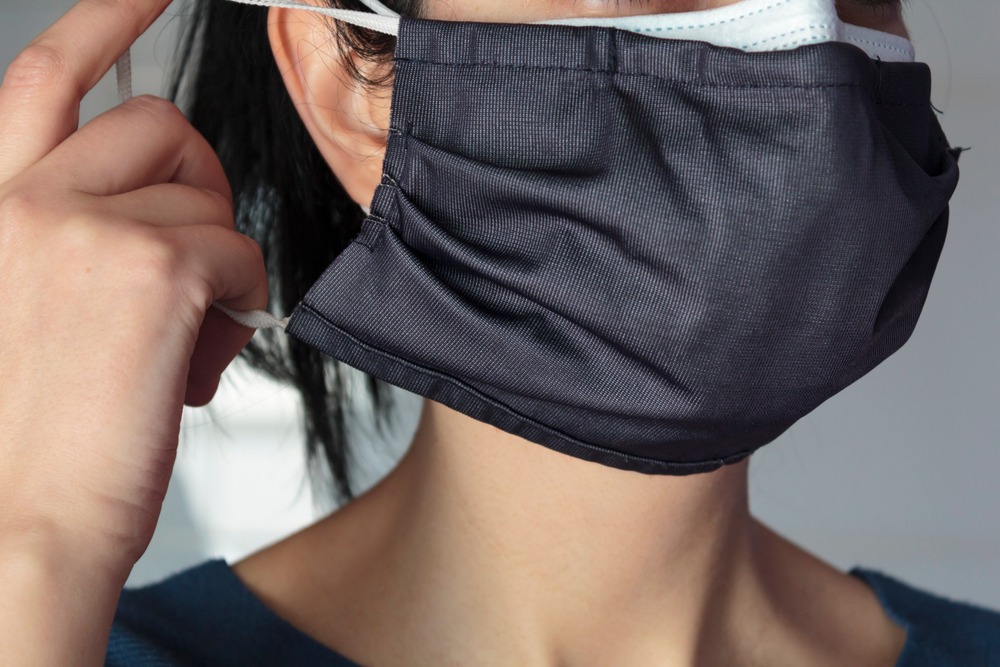
In the early days of the Covid-19 pandemic, the effectiveness of masks was questioned to the extent that some experts didn’t believe they were necessary at all – but new research indicates that double masking could give people twice the protection.
It’s generally accepted that masks act as a barrier for airborne viral particles of SARS-CoV-2, and the types of material used to make them is thought to be a key determinant of their effectiveness.
While this may still be the case, one study carried out at the University of North Carolina (UNC) Chapel Hill campus suggests that the fit of the devices may also play an integral role.
“The medical procedure masks are designed to have very good filtration potential based on their material, but the way they fit our faces isn’t perfect,” said Emily Sickbert-Bennett, PhD, associate professor of infectious diseases at the UNC School of Medicine and lead author of the study.
The study was undertaken by Sickbert-Bennett, co-author James Samet, PhD, and their colleagues at the US Environmental Protection Agency Human Studies Facility at UNC, after US Centers for Disease Control and Prevention (CDC) investigators reported on February 19 that doubling masks increased protection against Covid-19.
The UNC researchers claimed that the CDC’s assessment was limited in the types and combinations of masks tested, as well as by the use of humanlike robotic head forms that simulated the dispersal of particles during a cough.
To create a more human-relevant test design, Sickbert-Bennett and colleagues used three study volunteers, and published their results in the journal JAMA Internal Medicine.
How did the UNC researchers test double masking as a protection method against Covid-19?
The UNC researchers filled a 10-foot by 10-foot stainless-steel exposure chamber with small salt particle aerosols, and had researchers don combinations of masks to test how effective they were at keeping particles out of their breathing space.
Each individual mask or layered mask combination was fitted with a metal sample port, which was attached to tubing in the exposure chamber that measured the concentration of particles entering the breathing space underneath the researcher’s mask.
A second tube measured the ambient concentration of particles in the chamber, and by measuring particle concentration in the breathing space underneath the mask compared to that in the chamber – researchers were able to determine the fitted filtration efficiency (FFE).
For the doubling of each procedure and cloth mask tested, the same mask worn singly served as a control, and for all cloth–procedure mask combinations, the same procedure mask was used for all, with the single cloth mask serving as the control.
What were the results of the study?
The study found that procedure masks worn singly by study volunteers showed a range of mean FFE between 43% and 62%.
On average, across all masks and volunteers, adding a second procedure mask improved mean FFE from 55% when single masking to 66% when double masking.
Single cloth masks performed less efficiently, with a mean FFE range between 41% and 44%.
The study also found that although adding a procedure mask over the cloth masks provided modest increases in their FFE, the overall performance was no different than wearing the procedure mask by itself.
In contrast, wearing a procedure mask under the cloth face covering produced marked improvements in overall FFE, with a mean range between 66% and 81% – the latter figure almost double the lowest mean FFE range recorded for a single procedure mask.
What does the study tell us about the effectiveness of double masking?
Although the CDC advocated double masking after conducting its own studies, the organisation noted in its report that “finding that good fit can increase overall mask efficiency”.
One experiment found that when the source of the particles was unmasked and the receiver was fitted with the double mask or the knotted and tucked medical procedure mask, the receiver’s cumulative exposure was reduced by 83% and 64.5% respectively.
The research from Sickbert-Bennett and colleagues serves to emphasise the importance of a good fitting procedure mask, but if this is achieved then two layers of protection can only help prevent wearers from contracting Covid-19.
“We’ve found that wearing two loosely-fitted masks will not give you the filtration benefit that one, snug-fitting procedure mask will,” Sickbert-Bennett said.
“And with the current data supporting how effective mask-wearing is at preventing the spread of Covid-19, the best kind of double-masking is when you and the person you are interacting with are each correctly wearing a very snug-fitting mask.”






